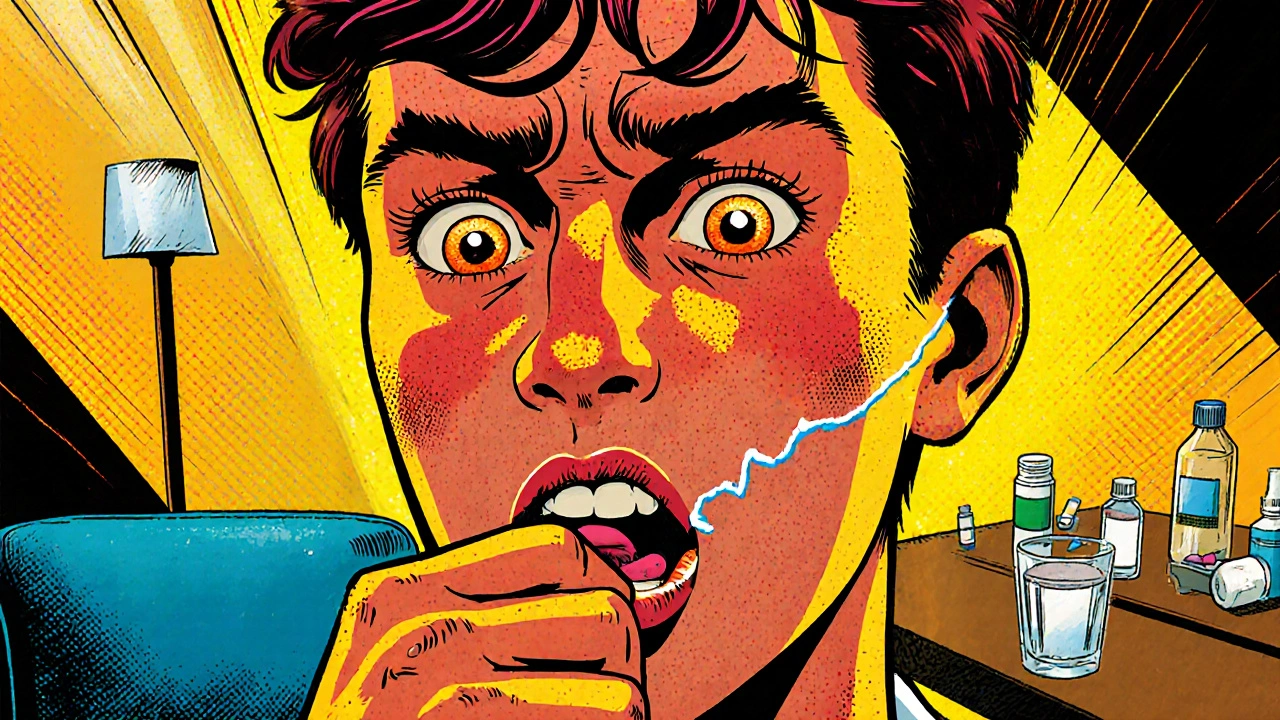
Amitriptyline Overdose: Recognizing Signs, Symptoms & Emergency Treatment
Learn how to spot early and severe signs of amitriptyline overdose, what immediate steps to take, and the medical treatments that can save a life.
When dealing with Emergency Treatment, the immediate medical actions taken to stabilize a patient facing a serious, time‑critical condition. Also known as acute care, it aims to prevent deterioration and buy time for definitive therapy. Antibiotics, drugs that kill or stop bacteria form a core tool when infections threaten life, while Cardiac Emergencies, situations like arrhythmia or heart attack that require urgent intervention demand rapid rhythm control or reperfusion. Together they illustrate that emergency treatment encompasses rapid antibiotic therapy and swift cardiac intervention, and that infection control influences emergency treatment outcomes. This blend of drug action and critical monitoring sets the stage for the diverse topics you’ll find below.
In a sudden bacterial lung flare‑up, doctors often reach for doxycycline or cefaclor – both highlighted in our articles – because early antibiotic therapy reduces pathogen load and prevents sepsis. A delay can let the infection spread, turning a manageable cough into a life‑threatening pneumonia. Likewise, an irregular heartbeat isn’t just uncomfortable; it can precede a stroke or cardiac arrest, so immediate rhythm assessment and medications like beta‑blockers or anticoagulants are critical. The same urgency applies to tuberculosis in pregnancy, where safe drug regimens protect both mother and baby, and to eye infections where prompt antibiotic eye drops stop vision loss. Each scenario proves the principle that emergency treatment requires the right drug, the right tool, and the right timing, whether you’re handling a respiratory crisis, a heart rhythm problem, or an infection‑related bleed.
Below you’ll see a hand‑picked selection of articles that break down these urgent scenarios. From detailed drug comparisons (doxycycline vs alternatives, cefaclor vs other antibiotics) to lifestyle tips for preventing arrhythmia, and from managing blood‑cancer‑related heart risks to navigating TB treatment in pregnancy, the collection gives you practical steps you can act on today. Dive in to find the specific guidance you need for any critical health event, and feel confident that you’re equipped with the right knowledge for real‑world emergency treatment.

Learn how to spot early and severe signs of amitriptyline overdose, what immediate steps to take, and the medical treatments that can save a life.